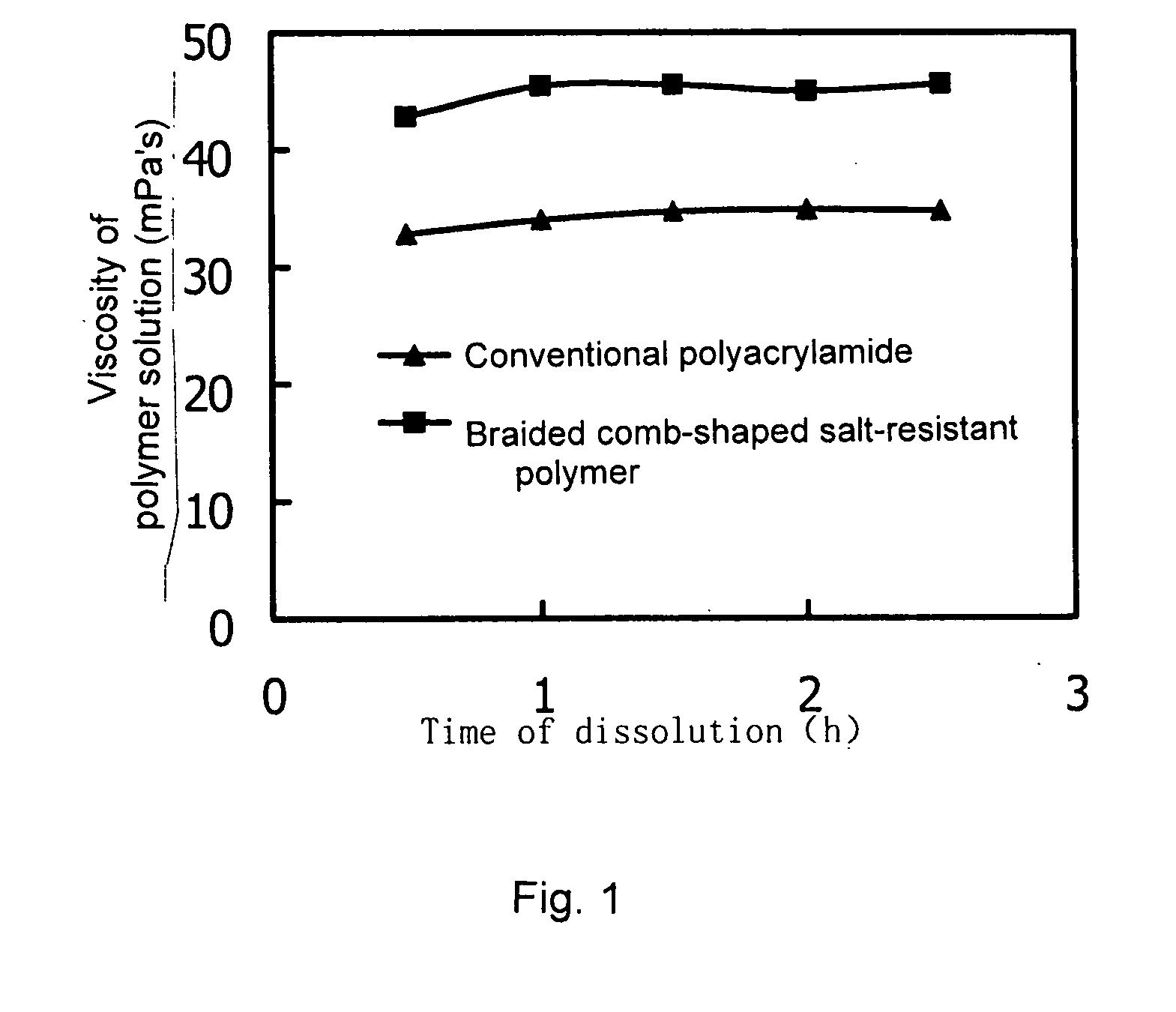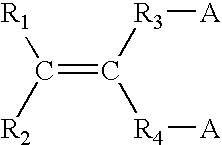Braided comb-shaped salt-resistant polymer thickening agent
- Summary
- Abstract
- Description
- Claims
- Application Information
AI Technical Summary
Benefits of technology
Problems solved by technology
Method used
Image
Examples
example 1
[0015] In an aqueous solution of 15% by mass of acrylamide and 5% by mass of monomer (b), the specific structure for the formula of monomer (B) in this example was:
[0016] Nitrogen was fed for deoxygenation for 30 minutes, 0.2% by mass of azo-diisobutyronitrile was introduced in as initiating agent, and the obtained was kept at 60° C. for 14 hours, so as to get a viscoelastic hydrogel product. The said product was dried in kneader at 90° C. for 8 hours to get a product in solid state, which was the polymer thickening agent.
example 2
[0017] In an aqueous solution of 9% by mass of acrylamide, 6% by mass of acrylic acid and 8% by mass of monomer (B), the specific structure for the formula of monomer (B) in this example was:
The solution was adjusted to a pH value being 8 with sodium hydroxide, nitrogen was fed for deoxygenation for 30 minutes, then 0.1% by mass of ammonium persulphate and 0.1% by mass of rongalite were introduced in, and the obtained was kept at a constant temperature of 40° C. for 8 hours to get a viscoelastic hydrogel product. The said product was granulated in granulator, then dried in a rotating drier at 90° C. for 3 hours to get a product in solid state, which was the polymer thickening agent.
example 3
[0018] In an aqueous solution of 5% by mass of acrylamide, 10% by mass of ethylene pyrrolidone and 5% by mass of monomer (b), the specific structure for the formula of monomer (B) in this example was:
Nitrogen was fed for deoxygenation for 30 minutes, 0.15% by mass of azo-diisobutyronnitrile was added in as initiating agent, and the obtained was kept at a constant temperature of 60° C. for 14 hours to get a viscoelastic hydrogel matter as the target product.
PUM
| Property | Measurement | Unit |
|---|---|---|
| Percent by mass | aaaaa | aaaaa |
| Percent by mass | aaaaa | aaaaa |
| Percent by mass | aaaaa | aaaaa |
Abstract
Description
Claims
Application Information
 Login to view more
Login to view more - R&D Engineer
- R&D Manager
- IP Professional
- Industry Leading Data Capabilities
- Powerful AI technology
- Patent DNA Extraction
Browse by: Latest US Patents, China's latest patents, Technical Efficacy Thesaurus, Application Domain, Technology Topic.
© 2024 PatSnap. All rights reserved.Legal|Privacy policy|Modern Slavery Act Transparency Statement|Sitemap



